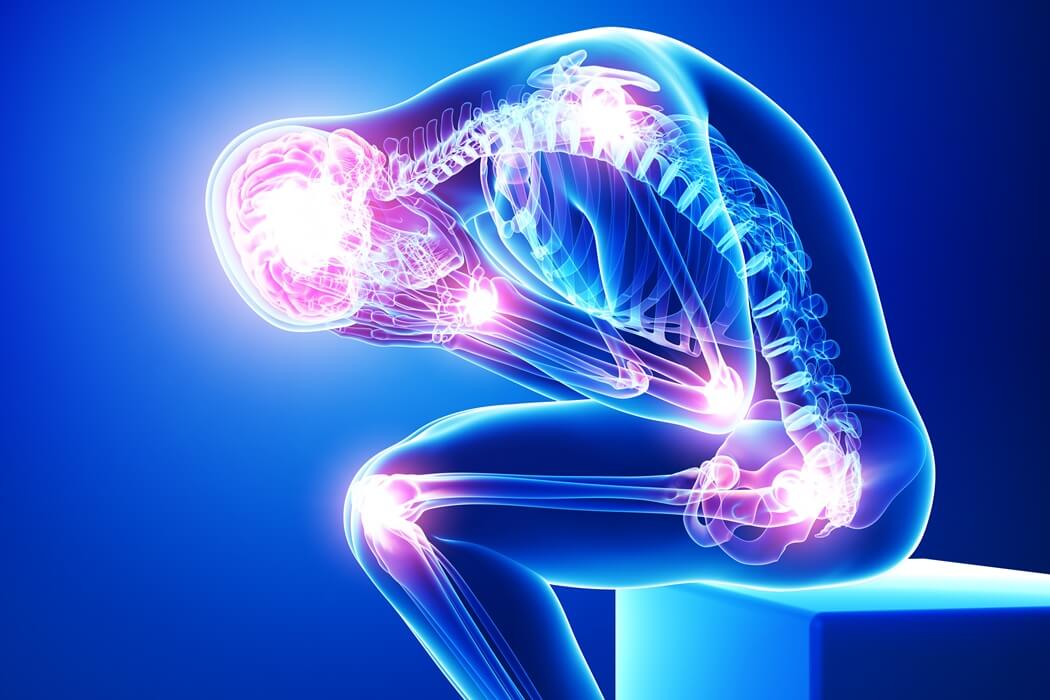
Nociceptive pain, often described as the body’s protective response to harmful stimuli, plays a crucial role in signaling potential threats to our well-being. Understanding the intricacies of nociceptive pain is essential for effectively managing and treating various pain conditions. This article delves into the causes, types, and treatment options for nociceptive pain, shedding light on the underlying mechanisms that contribute to this physiological response. By exploring the nuances of nociceptive pain, we can better comprehend how tissue damage, inflammatory processes, and neural pathways interact to generate the sensations that we commonly experience as pain.
1. Introduction to Nociceptive Pain
Defining Nociceptive Pain
Nociceptive pain is like the body’s alarm system, alerting you when there’s potential harm. It’s the pain you feel when a hot stove singes your finger, warning you to pull away.
The Role of Nociceptors
Nociceptors are the tiny sensors scattered throughout our body, waiting to sound the alarm. They detect harmful stimuli like extreme temperatures or pressure and send signals to the brain, triggering pain responses.
Tydol 100 tablet is a medicine used to treat moderate to severe acute pain in adults. It is used to treat many conditions such as headache, fever, period pain, toothache, and colds. It effectively alleviates pain when other treatments fail to relieve your pain.
2. Understanding the Causes of Nociceptive Pain
Tissue Damage and Nociceptive Pathways
When tissues are injured or damaged, nociceptors kick into action, sending signals through nerve pathways to the brain. It’s like your body’s way of saying, “Hey, something’s not right here!”
Inflammatory Processes and Nociceptive Pain
Inflammation can also set off nociceptors, amplifying pain signals. It’s like adding fuel to the fire, making the pain sensation even stronger and more persistent.
3. Exploring the Types of Nociceptive Pain
Somatic Nociceptive Pain
Somatic pain comes from the skin, muscles, and bones. It’s the sharp, localized pain you feel when you stub your toe or pull a muscle during a workout.
Visceral Nociceptive Pain
Visceral pain originates from internal organs like the stomach or intestines. It’s often described as deep, dull, or cramp-like, signaling potential issues within the body.
4. Diagnostic Approaches for Nociceptive Pain
Clinical Assessment of Nociceptive Pain
Doctors rely on your description of pain, physical exams, and medical history to diagnose nociceptive pain. Your detailed account helps them pinpoint the source and type of pain.
Imaging and Laboratory Tests
Advanced techniques like MRIs, CT scans, and blood tests can provide additional insights into the underlying causes of nociceptive pain. They help doctors confirm diagnoses and tailor treatment plans accordingly.
Understanding nociceptive pain is like decoding your body’s distress signals. By knowing its causes, types, and diagnostic approaches, you can work with healthcare providers to find effective treatment options and ease your discomfort.
5. Treatment Options for Nociceptive Pain
Medication Management
When it comes to treating nociceptive pain, medications play a crucial role. Doctors often prescribe non-prescription pain relievers like acetaminophen or ibuprofen. For more severe pain, prescription medications such as opioids may be considered. It’s important to follow your healthcare provider’s instructions carefully to avoid potential side effects.
Physical Therapy and Rehabilitation
Physical therapy and rehabilitation can be beneficial in managing nociceptive pain. Through targeted exercises and techniques, physical therapists can help improve mobility, strengthen muscles, and reduce pain levels. Additionally, rehabilitation programs may include modalities like heat or ice therapy to provide relief.
6. Pharmacological Interventions for Nociceptive Pain
Non-Steroidal Anti-Inflammatory Drugs (NSAIDs)
NSAIDs are commonly used to alleviate nociceptive pain by reducing inflammation. These medications work by blocking enzymes that contribute to the inflammatory response, helping to decrease pain and swelling. While NSAIDs can be effective, it’s important to use them as directed to avoid potential gastrointestinal side effects.
Opioids for Nociceptive Pain
In cases of severe nociceptive pain that does not respond to other treatments, opioids may be prescribed. These medications work by interacting with the body’s pain receptors to provide relief. However, due to the potential for addiction and other adverse effects, opioids are typically used cautiously and under close supervision.
7. Non-Pharmacological Management Strategies
Cognitive-Behavioral Therapy for Pain
Cognitive-behavioral therapy (CBT) can be an effective non-pharmacological approach to managing nociceptive pain. By helping individuals identify and change negative thought patterns and behaviors related to pain, CBT can improve coping mechanisms and overall quality of life.
Acupuncture and Alternative Therapies
Alternative therapies such as acupuncture, massage, or chiropractic care can also offer relief from nociceptive pain. These approaches focus on stimulating specific points or areas of the body to promote relaxation, reduce tension, and alleviate pain. Many people find these complementary treatments to be beneficial in conjunction with traditional medical interventions.
8. Emerging Trends in Nociceptive Pain Research
Neuromodulation Techniques
Neuromodulation techniques, such as spinal cord stimulation or peripheral nerve stimulation, are being explored as innovative ways to manage nociceptive pain. By targeting the nervous system with electrical impulses, these approaches can help modulate pain signals and provide relief for individuals with chronic pain conditions.
Genetic Basis of Nociceptive Pain
Researchers are also investigating the genetic basis of nociceptive pain to better understand why some individuals experience heightened pain sensitivity. By identifying genetic factors that influence pain perception, scientists hope to develop more personalized and effective treatment strategies tailored to individual genetic profiles. In conclusion, a comprehensive understanding of nociceptive pain empowers individuals and healthcare providers to make informed decisions regarding pain management strategies. By recognizing the diverse causes and types of nociceptive pain and exploring both pharmacological and non-pharmacological treatment options, individuals can work towards alleviating their pain and improving their quality of life. Continued research and advancements in the field of nociceptive pain offer hope for more effective interventions and better outcomes for those experiencing pain.




Leave a Reply